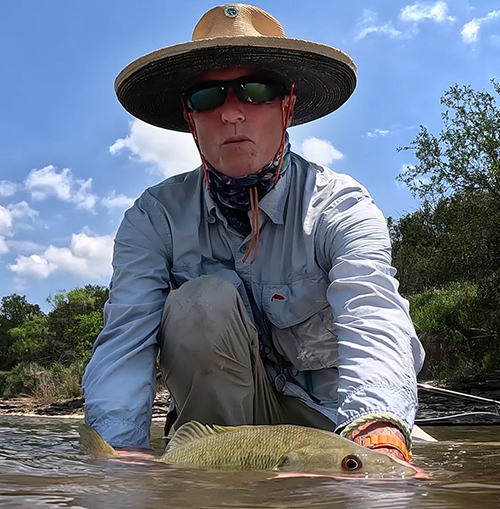
Brazos River in Texas History
In Case You Were Curious? The Brazos River has a deep historical presence in Texas, vastly deeper than what is covered here by ChatGPT. Thanks for reading this morning’s Sunday Morning Chat! Is there a fly topic you are curious about, but are afraid of “chat bots?” Let me know, and I will feed your question to the beasts. Word is, fly fishing the Brazos has been in fantastic for many weeks now (below PK Dam), and is still doing very well. That’s the latest I have. What do you know?

The Brazos River is one of the major rivers in Texas, and its history is intertwined with the State’s development and growth. Here is an overview of the history of the Brazos River in Texas:
1. Native American Settlements: Long before European settlers arrived, various Native American tribes, including the Waco, Tawakoni, and Wichita, inhabited the region along the Brazos River. These tribes relied on the river for water, transportation, and natural resources.
2. Spanish Exploration: Spanish explorers, including Alonso de León in the 17th century, ventured into the area surrounding the Brazos River. However, Spanish colonization efforts did not heavily impact the region.
3. Mexican Texas: In the early 19th century, Texas was a part of Mexico. Stephen F. Austin, known as the “Father of Texas,” established a colony along the Brazos River in the 1820s, bringing American settlers to the area. This marked the beginning of significant Anglo-American presence in the region.
4. Independence and Republic of Texas: During the Texas Revolution (1835-1836), the Brazos River area played a crucial role. The town of Washington-on-the-Brazos was where the Texas Declaration of Independence was signed on March 2, 1836. Texas won its independence from Mexico later that year.
5. Statehood and Economic Development: Texas became a state of the United States in 1845. The Brazos River served as a vital transportation route during the 19th century, facilitating trade and commerce. Towns and cities, including Waco, were established along its banks, leading to economic growth in the region.
6. Civil War and Reconstruction: During the American Civil War (1861-1865), the Brazos River area saw military activities. After the war, during the Reconstruction era, the region faced challenges, but the river continued to be a lifeline for communities.
7. Industrialization and Dam Construction: In the late 19th and early 20th centuries, Texas experienced industrialization. The construction of dams along the Brazos River, such as the Possum Kingdom Dam and the Whitney Dam, provided flood control, electricity, and water supply for the growing population.
8. 20th Century and Beyond: The 20th century saw further development and urbanization along the Brazos River. Cities like Waco, Fort Worth, and Houston grew, relying on the river for water supply and transportation. Conservation efforts and environmental awareness became significant in later years to protect the river’s ecosystem.
Today, the Brazos River continues to be an essential water source, supporting agriculture, industry, and communities in Texas. Its historical significance and economic importance remain integral to the state’s identity and development.

You must be logged in to post a comment.